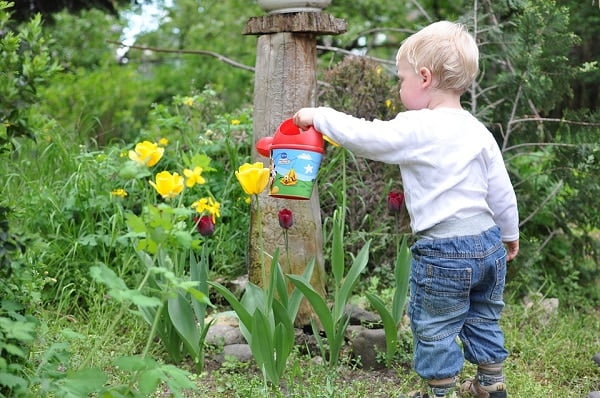Quick Summary
- Red maple trees can grow as tall as 100 feet or more, but their average height is 40-60 feet.
- Factors such as soil conditions, climate, and available sunlight influence the height of red maple trees.
- Red maple trees prefer moist soil and regular watering is essential for their health.
- Diseases such as anthracnose and verticillium wilt can affect red maple trees and should be treated by a professional arborist.
Red Maple Tree Overview
You’ll be amazed at just how tall red maple trees can grow. Red maple trees, also known as Acer rubrum, are famous for their stunning display of vibrant red foliage in the fall. These trees can reach impressive heights of up to 60-90 feet, making them a majestic addition to any landscape. When it comes to red maple tree care, there are a few important things to keep in mind. First, make sure to provide them with enough water, especially during dry periods. Red maples prefer moist soil, so regular watering is essential. Additionally, it’s important to prune your red maple tree regularly to maintain its shape and health. Remove any dead or diseased branches to prevent the spread of diseases. Speaking of diseases, red maple trees can be susceptible to a few common ailments. One such disease is called anthracnose, which causes dark spots and irregularly shaped dead areas on the leaves. To prevent anthracnose, make sure to clean up fallen leaves and debris from around the tree. Another disease to watch out for is verticillium wilt, which causes wilting and yellowing of the leaves. If you notice any signs of disease, consult a professional arborist for proper diagnosis and treatment. Red maple trees can grow impressively tall, reaching heights of up to 60-90 feet. To ensure their well-being, provide them with adequate water, prune regularly, and be vigilant for any signs of disease. By following these tips, you can enjoy the beauty of red maple trees while keeping them healthy and safe.Factors That Influence Tree Height
To understand the factors affecting the height of red maple trees, it’s important to consider various influences. Factors affecting growth can vary depending on the environmental conditions the tree is exposed to. Here are three important factors to consider:- Soil quality: The type and condition of the soil can greatly impact the height of red maple trees. They thrive in well-drained soil that’s rich in organic matter. Poor soil quality can stunt their growth and limit their height.
- Sunlight exposure: Red maple trees require a sufficient amount of sunlight to grow tall and healthy. Lack of sunlight can cause them to become spindly and have stunted growth. Ensure that your red maple trees are planted in an area where they can receive ample sunlight throughout the day.
- Water availability: Sufficient water is essential for the growth of red maple trees. They prefer moist soil but can tolerate short periods of drought. Inadequate water supply can hinder their growth and limit their height. Be sure to provide regular watering, especially during dry spells.
Average Height of Red Maple Trees
The height of red maple trees can vary significantly depending on factors such as soil quality, sunlight exposure, and water availability. These factors play a crucial role in determining the average growth rate and lifespan expectancy of red maple trees. On average, red maple trees can grow to a height of 40-60 feet, with some exceptional specimens reaching up to 100 feet. However, it is important to note that these heights are not set in stone and can be influenced by various environmental conditions. To give you a better understanding, here is a table that outlines the average height range and lifespan expectancy of red maple trees based on different factors:| Soil Quality | Sunlight Exposure | Water Availability | Average Height Range | Lifespan Expectancy |
|---|---|---|---|---|
| Rich | Full sun | Ample | 40-60 feet | 100+ years |
| Average | Partial shade | Moderate | 30-40 feet | 80-100 years |
| Poor | Shade | Limited | 20-30 feet | 60-80 years |
Exceptionally Tall Red Maple Trees
If you want your red maple to reach towering heights, it’s crucial to provide optimal conditions for growth. This includes rich soil, ample sunlight, and abundant water. Red maple trees have the potential to grow exceptionally tall, making them an impressive addition to any landscape. Here are four important characteristics to consider when aiming for an exceptionally tall red maple:- Strong Root System: A deep and well-established root system is essential for stability and nutrient absorption. Ensure your red maple has enough space for its roots to spread out and grow deep into the ground.
- Straight Trunk: A straight and sturdy trunk is necessary for a tall tree. Prune any lateral branches or competing leaders to encourage vertical growth and prevent the tree from becoming top-heavy.
- Dense Canopy: A healthy and dense canopy helps protect the tree from strong winds and reduces the risk of branch breakage. Regular pruning can promote proper air circulation and prevent the formation of weak or crossing branches.
- Regular Maintenance: Regular inspections, fertilization, and pest control are essential to ensure the long-term health and safety of your tall red maple. Hiring a certified arborist can help you identify and address any potential issues before they become major problems.
Are Avocado Trees Comparable in Height to Red Maple Trees?
Avocado tree height information indicates that these trees can grow up to 30 feet in height. On the other hand, red maple trees are known for their majestic stature, reaching heights of 40 to 70 feet. Therefore, avocado trees are generally shorter compared to their red maple counterparts.
Growth Rate and Age of Red Maple Trees
Imagine being amazed by the rapid growth and long lifespan of your majestic red maple tree! Red maple trees have a moderate growth rate, which means they can grow quickly and reach their maximum height of around 40 to 60 feet within a span of 20 to 30 years. However, the growth rate of red maple trees can be influenced by various environmental factors. One important factor that affects the growth rate of red maple trees is the availability of sunlight. These trees thrive in full sun or partial shade conditions, so make sure to plant them in an area where they can receive adequate sunlight throughout the day. Another factor to consider is soil moisture. Red maple trees prefer moist, well-drained soil, so make sure to water them regularly, especially during dry periods. Furthermore, the age of a red maple tree can also impact its growth rate. Younger trees tend to grow faster, while older trees may have a slower growth rate. It’s important to note that the growth rate of red maple trees can vary depending on the specific cultivar or variety. To ensure the safety and health of your red maple tree, it’s important to provide proper care and maintenance. Regular pruning and fertilizing can help promote healthy growth and prevent any potential hazards. By understanding the growth rate and considering environmental factors, you can enjoy the beauty and longevity of your red maple tree for many years to come.Benefits of Tall Red Maple Trees
If you’re looking for shade and temperature regulation in your yard, tall red maple trees are a great choice. Their dense foliage provides ample shade, keeping your outdoor space cool and comfortable during hot summer days. Additionally, these majestic trees serve as a wildlife habitat, attracting a variety of birds and other animals. Lastly, their vibrant red leaves in the fall and beautiful shape make them a visually appealing addition to any landscape.Shade and Temperature Regulation
When it comes to shade and temperature regulation, red maple trees have got you covered with their impressive height. These tall trees provide numerous benefits that can help keep you safe and comfortable in changing climates. Here are five reasons why red maple trees are the perfect choice for shade and temperature regulation:- Shade benefits: Red maple trees offer ample shade, creating cool and comfortable areas where you can escape the scorching sun.
- Climate adaptation: These trees are adaptable to various climates, making them a reliable source of shade and temperature regulation in different regions.
- Reduced heat: The shade provided by red maple trees helps to lower the temperature in their surroundings, creating a refreshing and safe environment.
- Protection from UV rays: The dense foliage of red maple trees acts as a natural sunscreen, shielding you from harmful UV rays that can cause sunburn and other skin damage.
- Cooler surroundings: The shade provided by these tall trees helps to lower the temperature of the surrounding area, creating a cooler and more pleasant atmosphere.
Wildlife Habitat
One of the many advantages of red maple trees is their ability to provide a diverse and thriving wildlife habitat. These majestic trees serve as important homes and sources of food for a variety of animals, helping to promote wildlife conservation and maintain ecosystem balance. The dense canopy of red maple trees offers shelter and protection for birds, squirrels, and other small creatures, keeping them safe from predators and extreme weather conditions. Additionally, the abundant foliage and seeds of the red maple provide a reliable food source for many species, contributing to the overall health and well-being of the wildlife community. By supporting a thriving wildlife habitat, red maple trees play a crucial role in preserving the delicate balance of the ecosystem.| Wildlife Conservation | Ecosystem Balance | ||
|---|---|---|---|
| Provides homes and food for animals | Maintains diversity | ||
| Protects animals from predators | Sustains ecological processes | ||
| Offers reliable food source | Promotes overall health | ||
| Supports a thriving wildlife community | Preserves delicate balance | ||
| Contributes to wildlife conservation | Maintains ecosystem stability | Ensures long-term survival of species and habitats. |
Aesthetic Appeal
Imagine walking through a picturesque landscape, surrounded by the breathtaking beauty of vibrant foliage and the soothing rustle of leaves under your feet. Red maple trees are renowned for their aesthetic appeal, adding a touch of elegance to any outdoor space. To maintain their visual impact, it’s essential to employ proper pruning techniques. Here are four tips to ensure the safety and health of your red maple tree:- Start by removing any dead, damaged, or diseased branches. This not only improves the tree’s appearance but also prevents potential hazards.
- Thin out crowded branches to improve air circulation and reduce the risk of disease.
- Maintain a balanced canopy by selectively pruning branches that are growing too vigorously or unevenly.
- Avoid topping or excessive pruning, as this can weaken the tree and make it more susceptible to disease and storm damage.
Pruning and Maintaining Red Maple Trees
To properly care for red maple trees, it’s essential to regularly prune and maintain them. Pruning techniques not only enhance the aesthetic appeal of the tree but also promote its overall health and safety. By removing dead or diseased branches, you can prevent the spread of diseases and reduce the risk of falling limbs that could potentially harm people or property. When pruning red maple trees, it’s important to follow proper techniques to avoid injuring the tree or yourself. Start by inspecting the tree for any dead or diseased branches, which are often indicated by discoloration or lack of foliage. Using clean and sharp pruning tools, make a clean cut just outside the branch collar, which is the swollen area at the base of the branch. Avoid leaving stubs or cutting too close to the trunk. To help visualize the pruning process, refer to the following table:| Pruning Technique | Description | Safety Tip |
|---|---|---|
| Crown Thinning | Removing select branches to increase light penetration and air circulation | Wear protective eyewear and gloves |
| Deadwooding | Removing dead branches to improve overall tree health | Use a ladder or pole pruner for hard-to-reach areas |
| Canopy Reduction | Reducing the overall size of the tree by cutting back branches | Hire a professional arborist for large or high branches |









